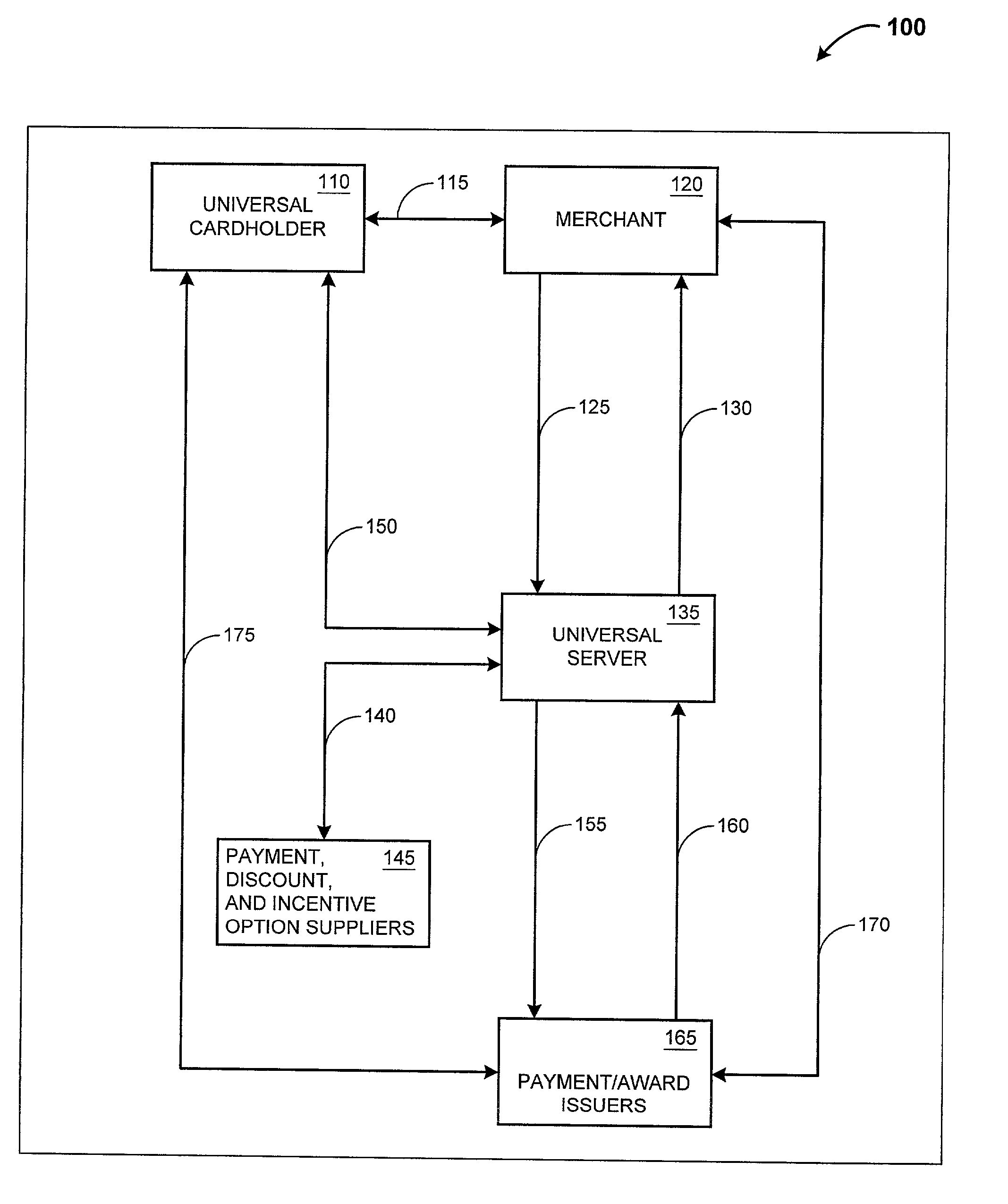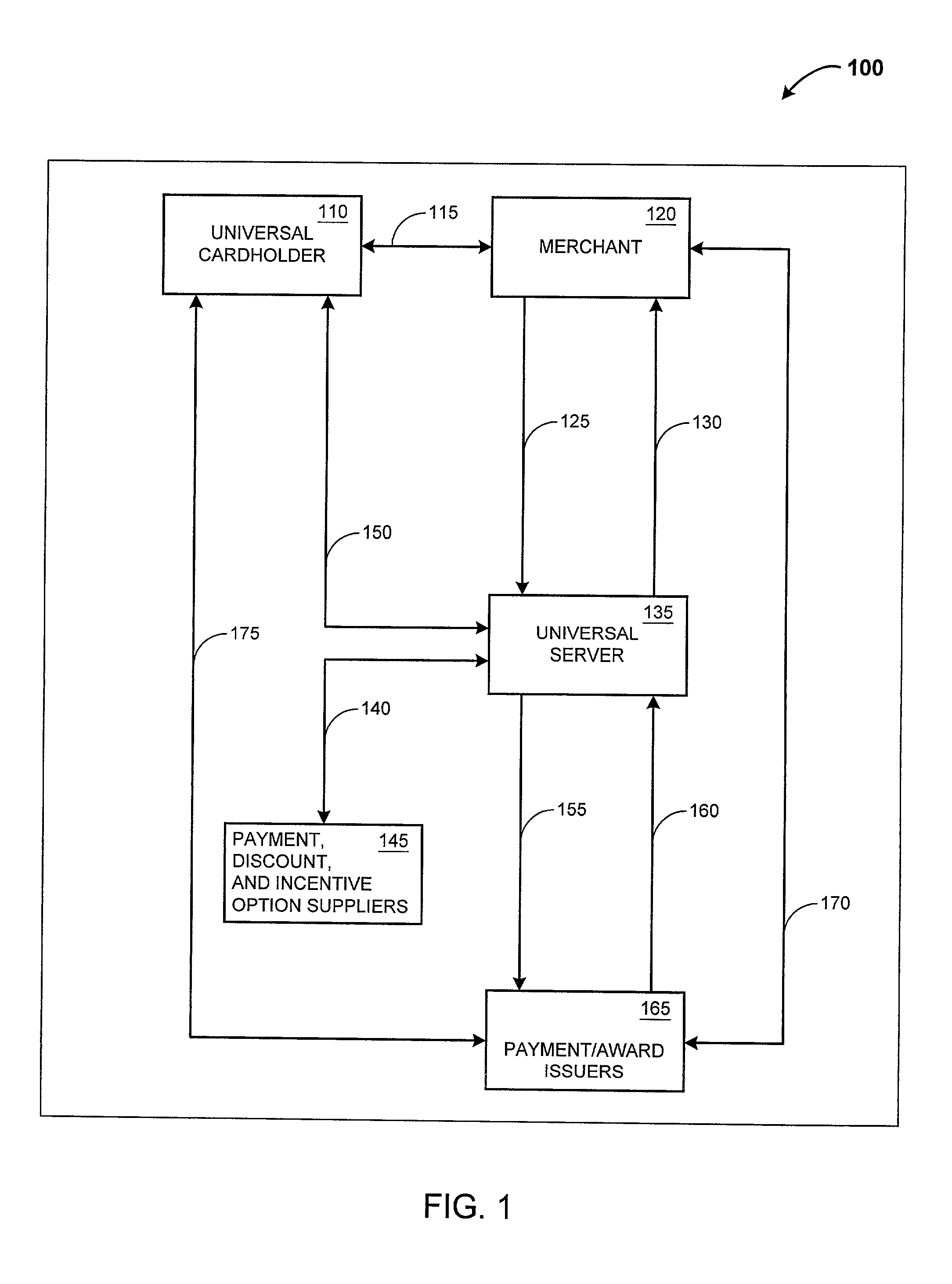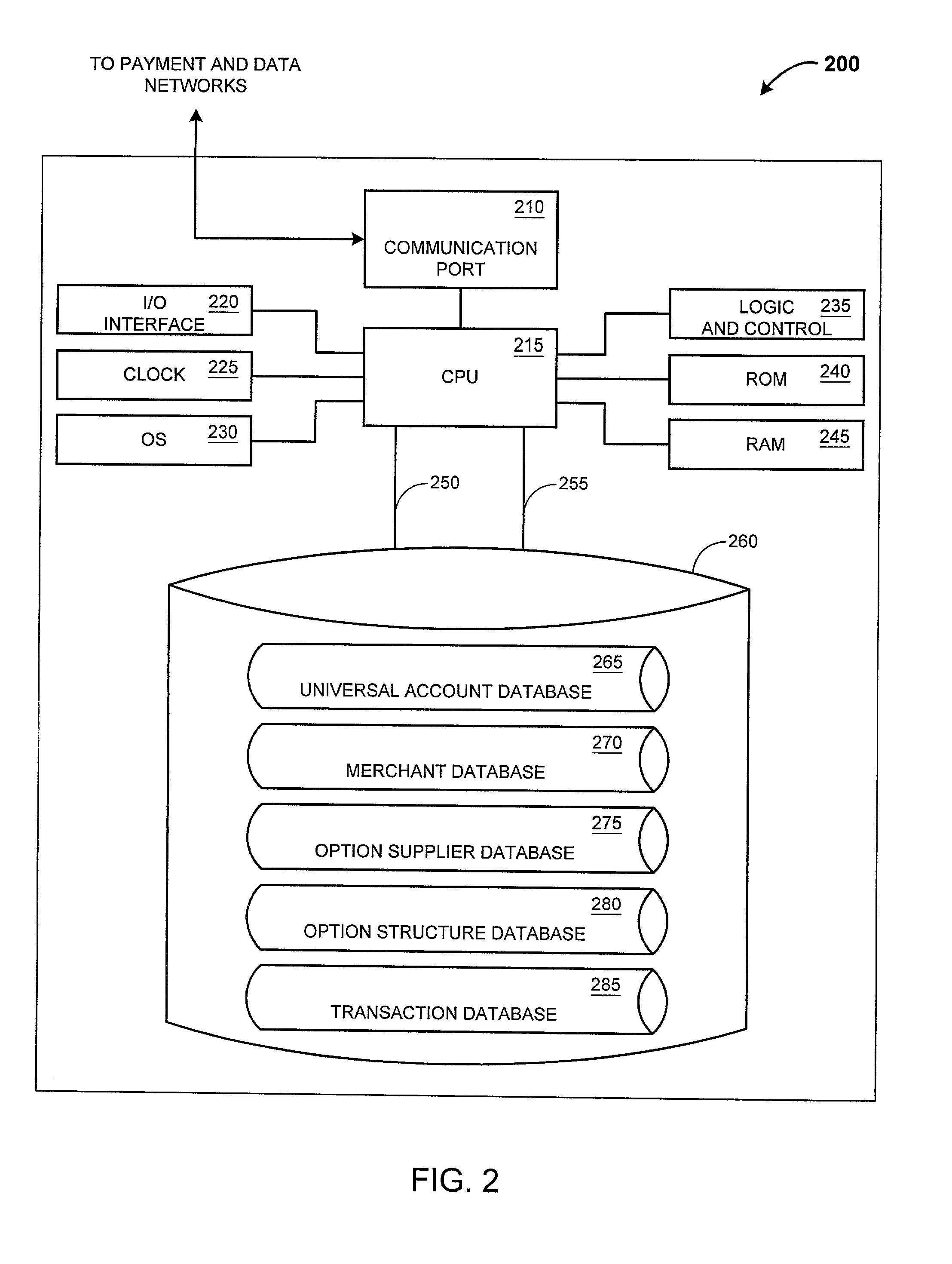The aforementioned
payment and settlement
processing system and incentive award
processing system approach is functionally limited in that: (a) making a payment is the primary goal while maximising the incentive benefits acquired or utilised is a secondary or ignored undertaking, (b) the selection of incentives and awards is generally based on a static "best award recalled" by the
consumer instead of reference to a dynamic and extensive "best awards available" catalog of benefits with meaningful valuations and rankings, (c) only "in-possession" payment or settlement mechanisms may be used at the time of a transaction (e.g., the need for pre-established and signed credit cards, paper-based discount coupons, downloaded
electronic mail messages with digital-based coupon codes in the
consumer's physical possession), and (d) there is an absence of customised, standardised, and competitive benefit information based on
consumer preferences, equivalent valuations, and the most current overall terms and conditions available from various and multiple incentive and award suppliers aggregated at the time of an action or transaction.
Accordingly, consumers seldom, if ever, receive the maximum or best incentives and awards available when using the prior art due to such reasons as a lack of consumer interest in managing incentives, a lack of easy and effective benefit rankings, and the consequences of a forgetful memory.
As such, the prior art has the
disadvantage that the selection and use of benefits is limited by the amount of time and effort a consumer wants to invest in managing their incentive and award undertakings.
An additional
disadvantage is that consumers have no way of comparing and determining the best benefits when different awards are available.
For example, a consumer may be presented with obtaining either 750 frequent flier airline miles or 425 bonus points and not be able to readily compare the values of such different awards.
People prefer to save money and would consider using incentives to do so, but a comprehensive and convenient method does not exist.
Another
disadvantage is that benefit acquisition and utilisation is dependent on the consumer knowing about benefit opportunities and then remembering to use a particular
credit card or to prepare earned awards, such as converting points into certificates, for benefit redemption in order to receive any utility value.
The consumer is further limited in that they can only make use of conventional incentive award search and discovery methods (e.g., reviewing bulk mail ads, television,
print media, Internet ads, Internet incentive sites such as DealTime and ValPak.com, reading verbose "fine-print" account contracts that explain benefits, word-of-mouth) to piece together a juxtaposition of bewildering information.
A further disadvantage is that a consumer needs to have credit cards, coupons, or other awards "in-hand" for presentation at the time of a transaction.
Furthermore, consumers and incentive award suppliers are significantly limited in their ability to interact with each other during a transaction in ways that would enhance value to both parties.
While consumers may know of and might use conventional incentive award search and discovery mechanisms to review incentive awards, such methods provide virtually no value to the consumer during a transaction since conventional methods only reflect historically published incentive awards and related terms and, more importantly, allow no interaction with the incentive award supplier's current zone of possible agreement, best negotiable alternatives, or dynamic
business objectives as they relate to performance achievement goals and award concession limits at the time of an action or transaction.
Consumers suffer burdens due to this limitation since they cannot easily, conveniently, and effectively filter, evaluate, and avail themselves of the pertinent and extensive opportunities and benefits that incentive award suppliers are willing to provide to them.
While helpful, such
information retrieval systems do not allow the consumer to interact with the incentive award suppliers, either in individual or aggregate transaction forums, to enhance the available incentive awards, to mix-and-match various award combinations, or to create custom incentive awards.
For example, a consumer is not able to utilise any "Quicken-identified" advantages when they move through a checkout line if a more desirable benefit program requires obtaining a new
credit card in order to settle their purchase with the cashier.
Furthermore, the prior art is limited in that its conventional payment and settlement
processing systems, incentive award processing systems and methods, and incentive award search and discovery mechanisms provide, at best, a simple "got it, don't got it" comparison of benefit features, and as such they do not provide active and dynamic benefit competitions.
Another limitation is that while organisations, such as eCredit.com Incorporated, offer methods to connect businesses to financing partners in order to provide real-time credit to consumers, the financing of a purchase at the time of the purchase is generally based on a financier's acceptance of risk, and such related conditions.
Such methods do not evaluate the consumer's desire for preferred incentives and awards and the commensurate means (e.g., payment accounts, award redemptions) available to acquire such incentives and awards.
Although the purchase is financed, the consumer acquires no additional benefits since there is no knowledge of the consumer's benefit preferences.
Previously proposed enhancements have not allowed consumers to
expose, transmit and have their incentive award preferences and conditions considered at the time of an action or transaction to the payment or incentive award suppliers using the conventional
credit card transaction system, payment and settlement processing system, and incentive award processing system infrastructures such as credit card stations, point-of-sale workstations, personal computers, or portable computing devices using any processing or connection means such as payment networks or
the Internet.
More particularly, previously proposed enhancements to credit card, payment, settlement, and incentive award systems have not allowed consumers and incentive award suppliers to directly adjust incentive award parameters at the time of an action or transaction that may affect the determination and production of settlement solutions, actions, and related payment or redemption accounts, and such other relevant account items, for delivery to related parties to affect actions and transactions and also user, consumer, merchant, award supplier, and payment and award issuer accounts.
Each of the aforementioned systems and processes require considerable time and effort on the part of the consumer if they seek to obtain benefits.
As such, the need for a consumer to search for incentive awards either manually or using additional systems and processes can be costly, can diminish the intended value of the incentive awards requiring such additional time, effort, systems and processes, and can limit the intended benefits to consumers.
Accordingly, the shortcomings associated with the prior art have heretofore not been adequately addressed.
 Login to View More
Login to View More  Login to View More
Login to View More 


